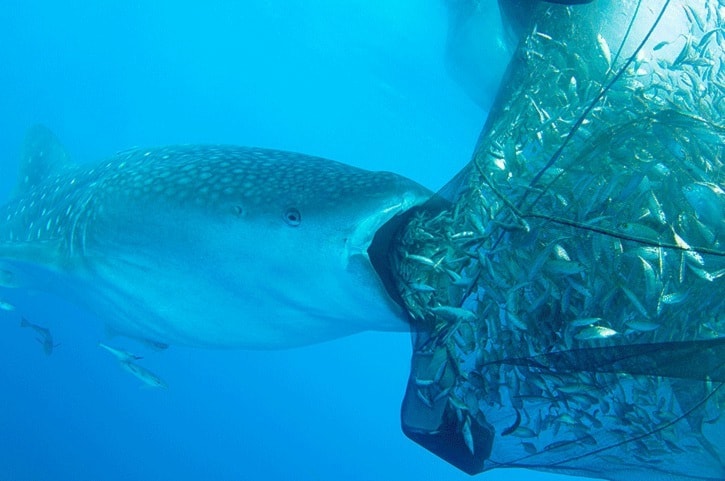A former South Surrey photographer, currently based in Bali, has won a top award in the world’s largest and most prestigious nature-photo competition.
Mike Veitch won honours in one of the categories of the Wildlife Photographer of the Year awards, presented Oct. 15 in London, England.
Presented by the British Natural History Museum and BBC Wildlife Magazine, the awards, now in their 49th year, drew more than 43,000 image entries in all categories from photographers around the globe.
Veitch’s winning image is of a young whale shark sucking on a net full of fish, taken in Cenderwasih Bay, Indonesia, with a Nikon camera in an underwater housing. It was judged best in the ‘World In Our Hands’ category, aimed at exploring the complex relationship between people and the environment, and documenting in thought-provoking fashion how human actions affect the natural world.
“The whale sharks in the area have learned over the years to associate local fishing platforms with an easy source of food because the fishermen mount huge lights at night above the platforms to attract small baitfish, which they sell in the local markets,” Veitch told Peace Arch News.
The professional photographer, who specializes in taking underwater and travel images throughout the Pacific region, added that the Indonesian fishermen have developed a tolerant relationship with the sharks that feed on their baitfish, and even consider them good luck, rather than killing them for their fins, which would fetch a good price on the black market.
But the feeding is not considered “normal” behaviour by the whale sharks, he said.
“We are not sure what this means to the whale sharks themselves, or how much the access to an easy meal is affecting their migration patterns and normal feeding behaviour.”
